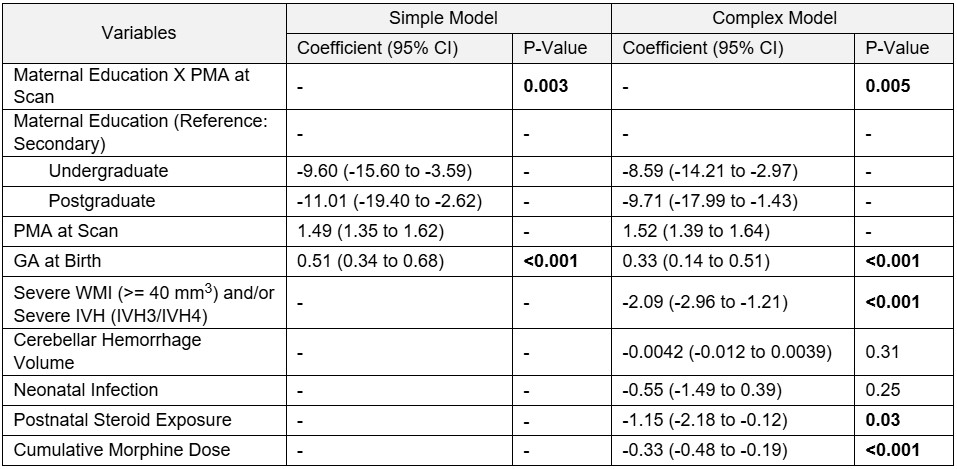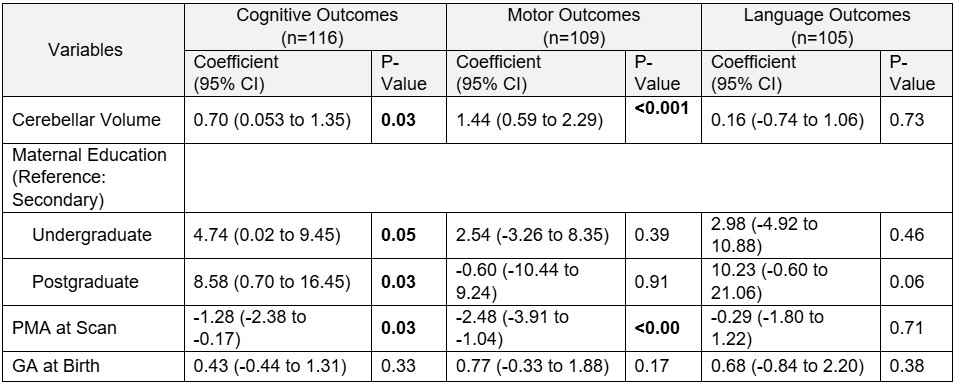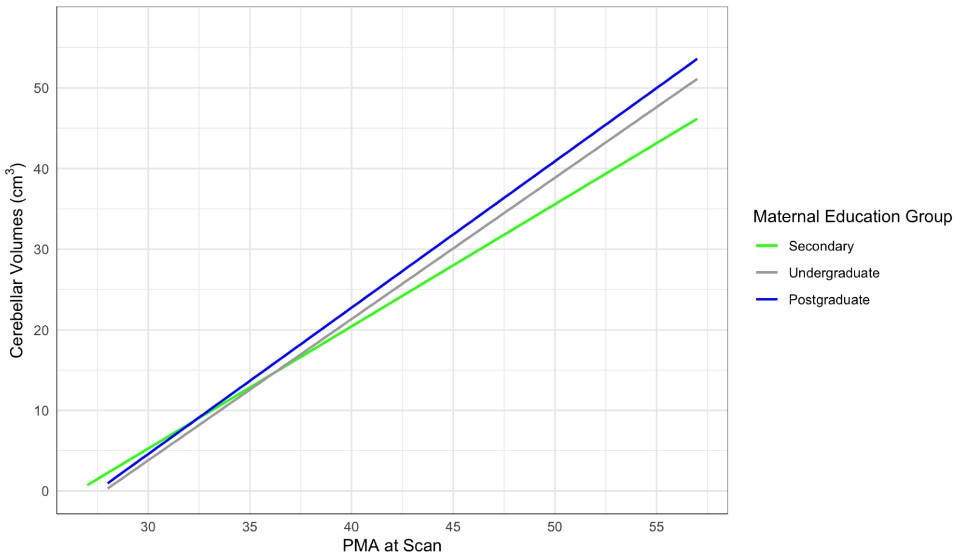Neonatal Neurology 6: Neurodevelopment
Session: Neonatal Neurology 6: Neurodevelopment
684 - Socioeconomic Status Modifies Early-life Cerebellar Maturation and is Associated with Childhood Cognitive Outcomes in Preterm Infants
Sunday, April 27, 2025
8:30am - 10:45am HST
Publication Number: 684.6732
Ajilan Sivaloganathan, University of Toronto Temerty Faculty of Medicine, Etobicoke, ON, Canada; Marta Ybarra, The Hospital for Sick Children, Pozuelo de Alarcón, Madrid, Spain; Ting Guo, The Hospital for Sick Children, Toronto, ON, Canada; Thiviya Selvanathan, University of British Columbia Faculty of Medicine, vancouver, BC, Canada; Stephanie Au-Young, The Hospital for Sick Children, Toronto, ON, Canada; Linh G. Ly, University of Toronto Temerty Faculty of Medicine, Toronto, ON, Canada; Edmond Kelly, University of Toronto Temerty Faculty of Medicine, Toronto, ON, Canada; Helen Branson, The Hospital for Sick Children, Toronto, ON, Canada; Vann Chau, The Hospital for Sick Children, Toronto, ON, Canada; Ruth Grunau, University of British Columbia Faculty of Medicine, Vancouver, BC, Canada; Steven Miller, University of British Columbia Faculty of Medicine, Vancouver, BC, Canada
- AS
Ajilan Sivaloganathan, BHSc (he/him/his)
Medical Student
University of Toronto Temerty Faculty of Medicine
Etobicoke, Ontario, Canada
Presenting Author(s)
Background: Cerebellar volumes have been associated with neurodevelopmental impairment in motor, language, and cognitive domains in preterm infants. Relative to other brain regions, cerebellar growth may be more sensitive to social-environmental factors.
Objective: To assess whether maternal education, our primary measure of socioeconomic status (SES), modifies the rate of early-life cerebellar growth during the period of neonatal intensive care, and relationships between neonatal cerebellar brain volumes and childhood neurodevelopment in preterm infants.
Design/Methods: Preterm infants born < 32 weeks gestational age (GA) were recruited at two tertiary Neonatal Intensive Care Units (NICUs). Early-life and term-equivalent age brain MRIs were obtained and assessed for brain injury. Cerebellar volumes were calculated from manually revised automated segmentations. Neurodevelopmental assessments at 36 months were conducted using Bayley Scales (3rd Ed.). Infants were categorized by the highest level of maternal education (Secondary, Undergraduate, or Postgraduate). Generalized estimating equations were used to assess whether SES modifies associations between cerebellar growth and neurodevelopmental outcomes using an interaction term, adjusting for relevant predictors.
Results: 167 infants (median birth GA 27.1 weeks, IQR: 25.3-29.3 weeks) had maternal education information (Secondary: 43, Undergraduate: 102, Postgraduate: 22) and cerebellar volumes. There was a significant interaction between SES and early-life cerebellar growth (p = 0.005, Table 1). Cerebellums of infants whose mothers had undergraduate and postgraduate education grew 0.24 cm³ (p = 0.004) and 0.30 cm³ (p = 0.01) more per week (Fig. 1), respectively, compared to those of infants in the secondary education group, when accounting for birth GA, clinical complications, and brain injury. Cognitive, motor and language outcomes were available for 116 (69.5%), 109 (65.3%) and 105 (62.9%) infants, respectively. SES did not modify the relationship between cerebellar volumes and neurodevelopmental outcomes; however, SES (undergraduate vs. secondary: p = 0.05; postgraduate vs. secondary: p = 0.03; Table 2) was associated with cognitive outcomes. Cerebellar volumes were associated with cognitive (p = 0.03) and motor outcomes (p < 0.001).
Conclusion(s): In a prospective cohort of preterm neonates, SES is related to cerebellar maturation in the NICU setting. Further research is required to elucidate the mechanisms underlying this relationship to inform interventions to optimize cerebellar development in preterm infants.
Table 1: Generalized estimating equation of maternal education × PMA at scan interaction and cerebellar volumes on early-life and term-equivalent age MRI.

Table 2: Generalized estimating equation of associations between early-life cerebellar volumes, maternal education and Bayley-III cognitive, motor and language scores at 36 months.

Figure 1: Cerebellar growth between early-life and term-equivalent age MRI by maternal education group (secondary, undergraduate, and postgraduate).


